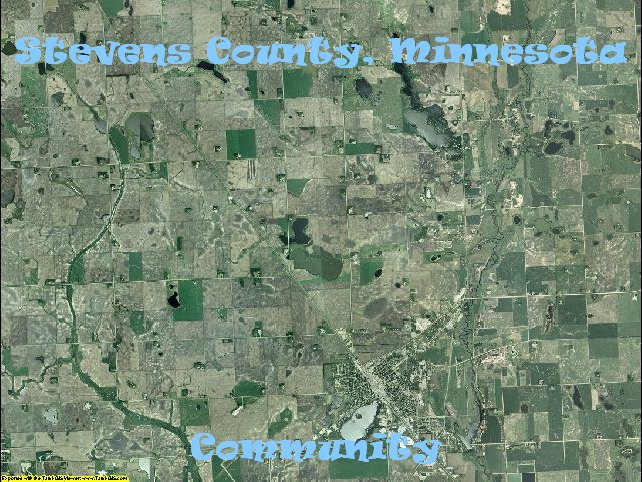

Team Charge: Create a profile of the Stevens County community that includes:
a. Demographic and Economic trends:
(1) Minnesota Census Data
Historical (1900-present) and Estimates (to 2030)
Source: Historical: U.S. Census Bureau; Estimates: Minnesota State Demographic Center from Center for Small Towns
(2)Rural Migration:
The �Brain Gain� of the
Newcomers
by
Benjamin Winchester
Coordinator, Data Analysis & Research (pdf.format)
(3)Publications & Presentations, from Center for Small Towns
*Ben shared on Tuesday, March 4th of 2008 to the whole group:
-Stevens County is the only gov't dependent (e.g. UMM, U.S. Soils Lab, WCROC, Social Services- somewhat the D.A.C. or group homes county, etc...)
-30 to 45 year olds are moving to the rural areas for a better "quality of life", but not in Stevens

b. An examination of relevant historical information on the community:
c. Identifying and assessing the community groups and organizations:
d. Other relevant information
Related Sites:
YouTube - John Mellencamp - Small Town
I (Sal) decided to take a look at some historical documents at the Stevens County Historical Museum on Thursday, December 27th of 2007. I had a week vacation (spent most of it visiting family and friends in St. Paul) and decided to just take advantage of my off-time for personal and community interest-particularly cultural/ethnic immigration. I was planning to stay for just less than an hour and I ended up losing track of time to stay close to 3 hours! That is how interested I was on what I found.
I skimmed half-way through this book that Bob Towner (volunteer) [shared about his past generation of English descendents that first settled here] and Tammy (staff) [shared about her being a second generation Czech descendent that first settled here] referred me to called "The History of Stevens County" by Edna Mae Busch (190 pages @1976). I was focussing on our groups' topics and my personal invidiual interest...
My focus was on immigration, which I personally have a high interest with as a second generation Filipino-American. Like my parents and many (Scandinavians, Germans, Irish, English, etc..) that immigrated here, came to the U.S. for a "better life". I skimmed through a book that the Stevens County Historical Society reccomended me to start with on this particular research topic called " "The History of Stevens County" by Edna Mae Busch. I found a lot of valuable interesting information that came to be Stevens County, which I feel will help many "citizens" of this county appreciate more of this place and better understand our identity. One of many interesting facts I personally found out was the large numbers that helped build the railroads here were Irish descent! Also, I feel knowing our county's history (e.g. Sioux, Chippewa, Dakota Indians originally were the first here) will help us better understand our current immigration (e.g. increasing large number of migrant workers from Mexico at the surrounding dairy farms-210 to 250 by the end of this year) in our area and to "work together" as a whole community (including the ones from the University of Minnesota-Morris campus). As a local volunteer teaching English as a Second Language to not only Hispanics, but Brazilians, Eastern Europeans, Chinese, etc...I've enjoyed learning from them, which I feel the community of Stevens County can all learn from them too.
An interesting stat I found on "Most common places of birth for the foreign-born residents:" (city-data.com)...
* India (11%)
* Germany (9%)
* Canada (9%)
* Korea (8%)
* Venezuela (6%)
* Nigeria (6%)
* Mexico (6%)
We just need to be more patient and understanding as some of them are trying as we did with the many that came before us since the late 1800's.
Bullet Points
(stvctyreportoutlineMay21st08.doc)
I. History
A. Immigration (Sal)
B. Migrant Workers (Sal)
*helped contributed to the growth of our county
C. Buildings (Marilyn)
1. Alberta School, Carnegie Library->Museum, Morris Elementary School, etc..
*many foundations paid for these projects
II. Outdoors-Hunting, Recreation (Greg-Natural)
*area was a hunter paradise
III. Community Events (all)
*"Corn & Alfalfa" Show in 1913 drew huge crowds!
IV.Locally Homegrown Foods (Ben)
*Hancock was the beef capital of the state
V. Retirement Community? (Ben)
VI. Fun "Cool" Facts (all)
*many famous people connected here
Note: shares on trends, stats, etc.. on the topics above
"...a book of data on the demographics and economy
of
our county. I have also attached Censusreportsfrom1990 and 2000.
Some points I would make from this data:
- our economy has shifted significantly since 1950 from agriculture to
education and health services
- we have a large number of employees commuting to our county
- we are the only government dependent county in the state
- we have many people holding multiple jobs"-Benjamin Winchester
-Natural History
Greg (May 08')
..If you wanted me to sum up the Natural History of the area I can do it here:
-- Native Americans traveled through and utilized this area, as artifacts and burial grounds remain.
-- Prairie fires were common until farming changed the landscape. Plowing native grasses and herbs eliminated the fuel for these fires. Today many native plants have been reintroduced to the landscape through farm programs and residents' general interest in preservation.
-- Several lakes with (according to folklore) a variety of fish and recreational properties were drained in the early 1900's against the wishes of many people. The county commissioners wanted the land drained to stop the exodus of those farmers who were looking for productive land and to encourage more to come farm the newly drained land. Many sloughs exist today that provide habitat for waterfowl, deer, pheasants and many other animals that may or may not be legally hunted. People are now arguing about the value of draining land on working farms as this is making the county's farmland even more productive at the expense of organisms like mosquitoes. (The mosquito bit is kind of a joke, but it is nevertheless true.)
-- The Laurentian Divide (North/South Divide) runs through the county. The watersheds to the north flow to the Red River and have an impact on Canadian waters. The watersheds to the south flow to the Mississippi River and have an impact on the Gulf of Mexico and the states that border the Mississippi and the Gulf.
-- Our climate gives us a taste of just about every kind of disaster and allows for the occassional pest infestation like the Grasshopper Plague of the 1870's."
The name of our county is somewhat debate able according to Busch. First, it could've been named after John H. Stevens, who had the first house in Minneapolis. The other is Isaac Stevens, who surveyed the local railroad. As I've previously read before, this region was the site of tribal disputes between the Sioux and Chippewa (see Native Americans). Some cool unique facts about our county is our geographic location with the Continental Divide. Pomme De Terre was named after french travelers after the many potatoes planted by the local Native Americans. The "White" Man drained a lot of the lakes in our area.
A. Immigration
The largest European ethnic groups that settled here were Germans, Scandinavians, and Irish (built the railroads in this region according to Bob and Tammy, which was very new information to me!).
B. Migrant Workers:
"She remembers that there were many colored people including Mexicans brought in to help make the railroad cut through town. They lived there in box cars all summer>"-Edna Mae on Hancock (pp. 171)
"At that time all Mexican laborers were used in the beet fields. A few protested because they said it would bring a low class of people in the community"-from Edna Mae on Alberta (pp.180)
-From Brad Fehr
We hired our first Spanish speaking employee in 1998. We reached 100 Hispanic employees in 2004 and added about 50 in each 05' and 06'. We currently have 210 Hispanic employees, 25 live in Swift county near Murdock. The average age is between 25 and 30 years old with approximately 10 families in Stevens County. We will add about 40 employees in 2008. They will be living near Murdock as well.
*below was just added for March 4th of 2008
Chokio-Alberta
Education:
Built History
-- Around 1916 the Manse in Alberta was built to house teachers. A fairly new concept at the time and was part of a model of Alberta's school (the only one from MN) shown at the World's Fair around 1919 to showcase "progressive concepts in public education. In 1983 was placed on register of Historical Places.
-listed in "Best High Schools" in U.S. News this year (2008)
Morris
Economy:
"..the 1920s were halted by the nation's stock market crash and the dust storms of the 1930s. People lost their jobs, businesses and banks closed, and the area land value fell by nearly 55 percent...Misdemeanors, robberies, assaults, and suicides were on the rise....Following the war (WWII) the local economy boomed...the move from being a retail center to being more service oriented.."-Celebrating 125 Years of Morris-Special Historical Review (May 19, 1996)
Education: "Indian School->Agriculture School->Liberal Arts & adding *"Environmental Studies"
"arrival of instructors and students from foreign lands... the community has benefited from this." (pp.121 by Edna Mae on UMM)
-Overall
C. Historic Places:
1 Alberta Teachers House Main St. Alberta 1983-02-11 (*Rockefeller Foundatin played a part)
2 Morris Carnegie Library Nevada and 6th Sts. Morris 1983-01-27 (*Carnegie Foundation) helped
*now known as the Stevens County Historical Society Museum
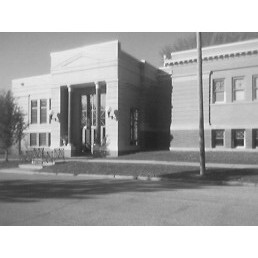
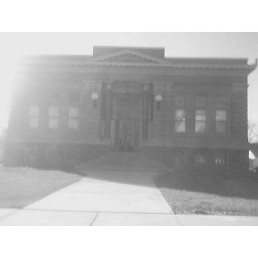
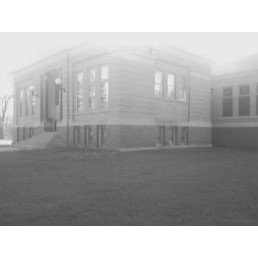
3 Morris High School 600 Columbia Ave. Morris 2004-05-25
*former "old" elementary school
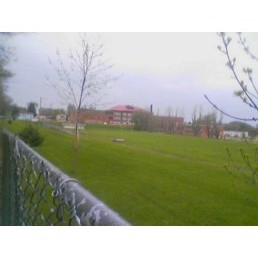
4 Morris Industrial School for Indians Dormitory Off 4th St. Morris 1984-05-10
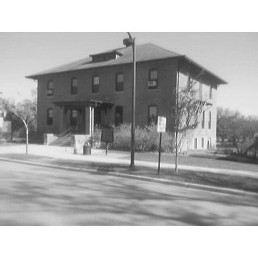
5 Stanton, Lewis H., House 907 Park St. Morris 1982-08-19
6 West Central School of Agriculture and Experiment Station Historic District
600 E. Fourth St. Morris 2003-01-15
*Note: Many grants and foundations has contributed to the growth of our area and still continues (e.g Blandin, COPC, etc..)
Recreation-Hunting:
This area has had a rich history of hunting, which Busch described as a
Related Sites:
-
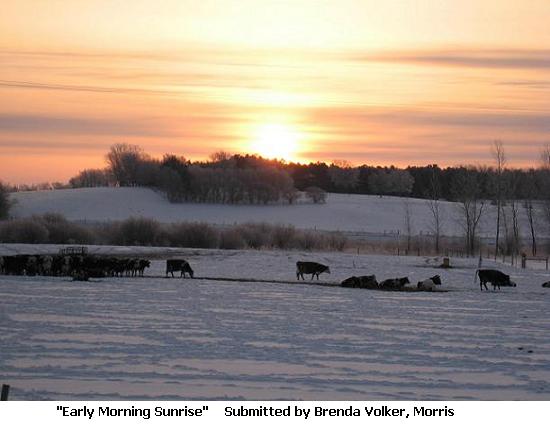
(Courtesy of Brenda V.-featured in KMRS/KKOK: Photo of Day-March 28th of 2008)
Hancock
*"Minnesota's Beef Feeding Capital" back then and maybe still..
-Had the oldest jail in the state
-Charles Lindberg got trained as a pilot here
-William Penn's wife settled here
-Morris was the first city to adapt a "city manager" pp. 115 (Busch)(see Wikipedia)
-Stevens County Reporter (county-wide newspaper) before the Morris Sun Tribune (pp. 142 Busch)
PLEASE SCROLL DOWN FOR MORE DETAILS....

-Trails
In Darren Township (west of Hancock), there was a high overlook that was named "Mount Beauty" (pp. 5), which is located where the Fehr's occupy according to Busch. Popular routes, such as Wadsworth Trail and Mandan Road, that is mention today was stated here by Busch.
-Railroads
The railroads not only brought people to work and settle here, but also trouble (e.g. "tramps" and "robbers")!
-English as a Second Language
English being spoken as a second language has a had a long history since the first immigrants to Stevens County in the late 1800's. They would have separate church services for English or other languages. When WWI came, many local Germans would try to learn English quickly to hide their identity. Other stories of challenges of learning English are mentioned in this book by Busch.
-
FRAMMAS: Had the most Norwegian descendants. This is where the first church of Stevens County was located-Scandia Lutheran Church, which I personally had the opportunity to visit with some friends a couple of years ago. Also, this is the area where the Jehovah Witness first started their place of meeting in 1966. Morris actually had a place to make flour called the "North Star Flour Mill"!
SWAN LAKE: Possibly the largest Indian mound in the state is located here
DONNELLY: "Little Norway", Moose Island, etc.. James J. Hill stayed at the Barret Ranch here.
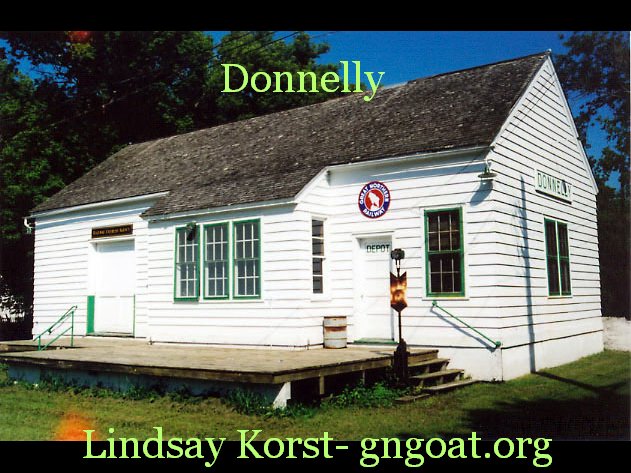
Town name after Ignatius Donelly...
", 1831-1901, American author and agrarian reformer, b. Philadelphia. He studied law, was admitted to the bar, and in 1856 moved to Minnesota. There he gained political prominence, was lieutenant governor (1859-63), Congressman (1863-69), and a state legislator. Strongly expounding agrarian reform, he was a founder and leader of the Populist party and the author of the ringing preamble to the party platform of 1892. He edited the weekly Anti-Monopolist (1874-79) and the Populist Representative (1894-1901). His many popular works included Atlantis: The Antediluvian World (1882), an erudite but fanciful work on Atlantis ; Ragnarok: The Age of Fire and Gravel (1883); two books arguing that Bacon wrote the Shakespearean plays; and a gloomy Utopian novel, Caesar's Column (1891). "
-Cool Facts:
President Theodore Roosevelt went through this town by train on his way to the West Coast
-Demographics:
City-Data
"For population 25 years and over in Donnelly
* High school or higher: 84.9%
* Bachelor's degree or higher: 7.8%
* Graduate or professional degree: 1.1%
* Unemployed: 1.4%
* Mean travel time to work: 15.4 minutes
"
City-Town Info
"The city is home to some 254 residents."
Epodunk.com
"41% of Donnelly residents report German ancestry, and 8% report Irish. For more info on local ancestry groups, see the Donnelly ancestry & family history guide."
-Attractions:
Depots Minnesota
"Donnelly, MN depot. Photo taken by Lindsay Korst in August 2003"
-Education:
Merged with Morris in 1950 and would close 21 years after.
-Events
ELDORADO: Stands for "gilded" in Spanish. A cool history I found of a former resident from here was Dr. Moses Barron, who was one of the only Jewish residents in this township. He would later move to St. Paul to go into medicine and would end up contributing to helping Dr. Banting (Nobel Prize winner) on discovering insulin....
"After writing up the lecture, he settled in to read a freshly published article called The Relation of the Islets of Langerhans to Diabetes by Dr. Moses Barron. He reported that blocked pancreatic ducts would make the pancreas shrivel, but its cell system the islets of Langerhans did not. He also noted that diabetes didn't appear to develop unless the islets were damaged. Could the islets carry the secret of the mysterious internal secretion? The question kept Banting awake. Finally, at about 2 a.m., he got out of bed and scribbled the following words on a small sheet of notebook paper dated Oct. 31, 1920."-Insulin: A Canadian medical miracle of the 20th century
Also, another notable is Robert Rhode, who was an archer that became well known in the field of archery around the world.
PEPPERTON:
SCOTT:
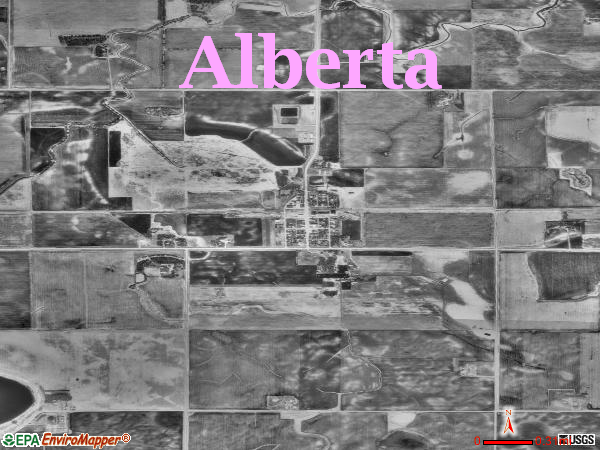
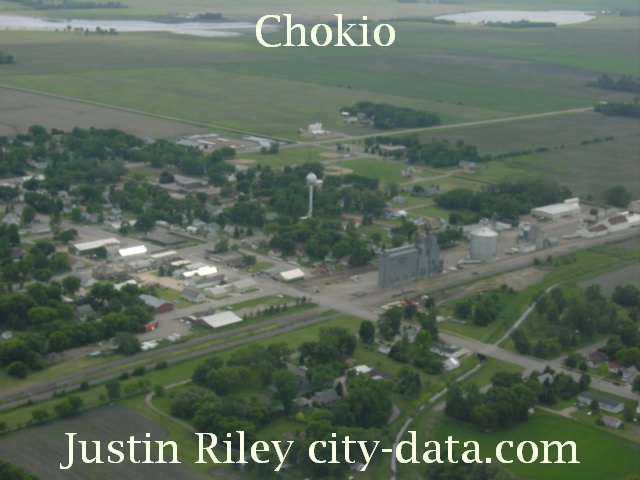
*see
As I write this today (Tuesday, January 1st of 2008), I remember Bob and Tammy sharing about "other" ethnic groups immigrating to this area. Many came from the east coast (as mentioned in the book by Busch for hunting and work too) that were English descent. Tammy added that the local college (University of Minnesota-Morris) has brought in many people from all over the world (e.g. international students) to study here and some end up living here. I added the local migrant workers too that come to work at the dairy farm and pig farm too.
I decided to e-mail Brad Fehr, who is part of the Stewardship and he replied with this valuable info...
From: "Brad Fehr"
"Sal
I don't have exact numbers but I can get you close.
We hired our first Spanish speaking employee in 1998. We reached 100 Hispanic employees in 2004 and added about 50 in each 05� and 06�. We currently have 210 Hispanic employees, 25 live in Swift county near Murdock. The average age is between 25 and 30 years old with approximately 10 families in Stevens County. We will add about 40 employees in 2008. They will be living near Murdock as well.
If you have more questions let me know.
Thanks
I then thought about the history of the UMM Campus as an Indian Catholic Boarding School, which I plan to search more on this part of this area's history.
About UMM
Organizations in Stevens County
Just a note to let you know that I have done some research on organizations within the county and have come up with about 30 different groups, I'm sure there are more. These 30 represent outdoor rec, community service, seniors, veterans and sports, and have no affilation with gov, school or church. It appears we have a large group of people to achieve some of the destiny drivers that we will come up with.
-Report from Greg (January 5th of 2008)
Built and Natural History:
Related Sites:
Natural History
-- North/South continental divide runs through Chokio. As I've heard Glen Tomoson say about Stevens Co., "Everything else is downhill."
*see July 4th Storm of 03', Winter Storms, etc..
Video Presentation
-Music
All my friends are so small town
Educated in a small town
But Ive seen it all in a small town
No I cannot forget where it is that I come from
Got nothing against a big town
Well I was born in a small town
-Busch, Edna Mae. "The History of Stevens County" (190 pages @1976)
Related Sites:
Demographics
Workbook: The Labor Force in Stevens County, Minnesota
Education
Table 8F. (pp8-5)
Maps
To: "'GoodNews Morris'"
Subject: RE: Sal-question on demographic & #'s of farm workers the past years?
Date: Fri, 28 Dec 2007 09:55:09 -0600
Brad
"The University of Minnesota, Morris makes its home on a 118 year-old campus. The first buildings housed an American Indian boarding school, first administered by the Sisters of Mercy order of the Catholic Church and later by the United States Government. The school closed in 1909, and the campus was transferred to the State of Minnesota with the stipulation that American Indian students "shall at all times be admitted to such school free of charge for tuition," a policy the campus proudly honors. The current Multi-Ethnic Resource Center is the only remaining building from the American Indian boarding school period."
-Report from Wayne
"The following list represents a small selection of available recreational services, community organizations and clubs within the county. A more comprehensive compilation may be obtained from the Morris Area Chamber of Commerce by calling (320)589-1242."
I've read Edna Mae Busch's book a few times since high school and I still learn something new each time I read it. Due to the engrossing material, I apologize for a lack of specific dates and other oversights -- hopefully someone picks up on what I've missed or misinterpreted. I have italicized what I thought would be relevant about this history. I hope this helps our group some. Take care and see you Tues. -- Greg....
*Built History
-- Around 1916 the Manse in Alberta was built to house teachers. A fairly new concept at the time and was part of a model of Alberta's school (the only one from MN) shown at the World's Fair around 1919 to showcase "progressive concepts in public education. In 1983 was placed on register of Historical Places.
-- From 1895 - 1910 a county poor farm was operated in Pepperton twp. for those in need. "Charity in the midst of the new settlers own struggles.
-- The Carnegie Library is now the Museum
-- Many rural churches and consolidations with city churches. "Religion was important right from the start.
-- Roads (rural especially) were terrible for the first 40 years after settlement. Improving roads was necessary for transporting goods from farm to town and back again and also kids to the schools that had started to consolidate i.e. Alberta and some surrounding rural districts. " Good infrastructure wasn't built overnight.
-- 1880 - 1902? The Bull Farm 2.5 mi NE of Hancock was one of several Bonanza farms in the area. At one time it managed 14,000 acres in MN & ND. A large mansion on the site was host to many parties. Bonanza farming was not as lucrative as hoped and the estates holdings were sold in smaller parcels.
-- Some of the first homes were dugouts along lake depressions, then sod homes before lumber could be hauled in.
*referred by Marilyn
1 Alberta Teachers House Main St. Alberta 1983-02-11
2 Morris *
Carnegie Library Nevada and 6th Sts. Morris 1983-01-27
3 Morris High School 600 Columbia Ave. Morris 2004-05-25
4 Morris Industrial School for Indians Dormitory Off 4th St. Morris 1984-05-10
5 Stanton, Lewis H., House 907 Park St. Morris 1982-08-19
6 West Central School of Agriculture and Experiment Station Historic District 600 E. Fourth St. Morris 2003-01-15
National Register of Historic Places: Minnesota-Stevens County (detailed)
-- Moose Lake once covered a large area in Sections 34 & 35 of Donnelly Twp. and a little into Pepperton Twp. Drained in 1909 to stop the loss of homesteaders leaving for farmable ground. Now we have more acres of productive land. "One of many areas drained against somebody's opposition. Many small lakes like this had a tremendous fish population until either drained, carp were introduced, or fished out."
-- 1868 was the last year a buffalo or an elk was spotted in this area. 1923 is when deer were spotted in the area.
-- Pioneers fought common prairie fires with wet gunnysacks and plowing furrows. Plowing the ground eliminated many Native grasses and herbs from this area. Ernie Strubbe of Pepperton Twp. had a patch of undisturbed prairie on his land until his death in the late 1980's or 1990's. It may still be there. Many of these native plants are being seeded in CRP land nowadays.
-- Many sloughs for ducks and geese among other animals. Excellent hunting and natural habitat.
-- Lakes and the Pomme De Terre River.
-- Native American artifacts and burial grounds.
-- Trapping for furs was a major way for trading when farming wasn't good in the early days.
-- Tornadoes, Blizzards, Floods, Pest infestations, Wind storms, Fires -- Stevens Co. has had it's share.
Wikipedia
"John Mellencamp, also known as John Cougar and John Cougar Mellencamp, (born October 7, 1951) is a Grammy-winning American rock singer-songwriter and occasional actor.
John Mellencamp was inducted into the Rock and Roll Hall of Fame on March 10, 2008 by Billy Joel.[1]
John Mellencamp - Small Town, from youtube.com
"Music video by John Mellencamp performing Small Town
with Fay Cummins, John Mellencamp, Jonathan Kaplan, Steven Ramsey, Ed Brennan
(C) 1985 John Mellencamp under exclusive license to the Island Def Jam Music Group"
"Well I was born in a small town
And I live in a small town
Probly die in a small town
Oh, those small communities
My parents live in the same small town
My job is so small town
Provides little opportunity
Taught the fear of jesus in a small town
Used to daydream in that small town
Another boring romantic thats me
Had myself a ball in a small town
Married an l.a. doll and brought her to this small town
Now shes small town just like me
I cannot forget the people who love me
Yeah, I can be myself here in this small town
And people let me be just what I want to be
Still hayseed enough to say
Look whos in the big town
But my bed is in a small town
Oh, and thats good enough for me
And I can breathe in a small town
Gonna die in this small town
And thats probly where theyll bury me"
-lyricsfreak.com
'Small Town Southern Man' Video | Alan Jackson, from aol.com
-Photos
Source-References:
-Stevens County Historical Society (SCHS). "Images of America: Stevens County" (128 pp). Arcadia Publishing. Copyright @2007 ISBN 978-07385-4082-5
=>COOL FEATURES:
Table of Contents:
1. Agriculture pp.9
"Corn & Alfalfa" Show in Dec. 10th-12th of 1913 drew 1,200 from Pope County alone! It brought the current state Governor, UofM President, and James J. Hill
2. Arts & Culture pp.25
Queen Esther play
3. Business & Industry pp35
Hancock Auto
4. Churches pp.49
many destroyed by fire
5. Early Settlers & Homes pp.59
-General (led in the Battle Of Palmito Ranch) Theodore Barret had a ranch that 20 "laborers" worked at
-Mary Ann Ware (Wife of William Penn)
-Lewis Stanton (son of Secretary of War for President Lincoln)
6. Education pp.71
Alberta High School was helped funded by Rockefeller Foundation
7. Family Life & Leisure pp.87
-Dakota Native Americans buried their dead throughout Stevens County
-hunting (many pics)
-Sulky (horse) Races
8. Main Street pp.105
9. Transportation pp.111
Charles Lindbergh and Amelia Earhart (pictured in pp. 120-121) were taught by Leroy "Roy" Woolridge (purchased the first airplane in Stevens County called "Travel Aire" in March of 1928 with Jess M. Kenyon-owner of the MOrris Motel).
10. Weather pp.123
Big Snowstorms: 1892, 1909, 1917, etc..
Flood: 1905
Wind ("cyclones" or "straight line winds"): 1914, 2004, etc..
$15.59 -Amazon.com
Book Description
"The land area that came to be known as Stevens County was ceded to the United States government by the Dakota Indians in the treaty of the Traverse des Sioux in 1851. Government and railroad exploration parties, Red River Trail oxcarts, and pioneers and missionaries had come through the area long before it was officially ceded or settled. After the Dakota uprising of 1862, the United States government made the decision to put a fort in Dakota Territory. In 1864, Fort Wadsworth, later called Fort Sisseton, was built. Mule teams with supplies for soldiers and Native Americans, and pioneers began traveling in greater numbers across the tallgrass prairies of Stevens County from St. Cloud and into Dakota Territory. Pioneers from many different countries settled in Stevens County to break up the prairie sod and plant wheat and tree claims on their homesteaded land. Grasshoppers, prairie fires, and blizzards tested their determination, but the hardy ones survived to provide for their children�s education, organize local governments, and build homes, churches, and businesses."
About the Author
The authors of this book present Stevens County and its important pioneer history in a style that invites the reader to look at all aspects of life in the county. In stories and photographs from the collection of the Stevens County Historical Society, Stevens County tells of pioneers, their descendents, and the full and varied lives they lived on the tallgrass prairie of westcentral Minnesota."
Barnes&Noble
Reccomended Resources
*Stevens County Economic Improvement Commision, Inc., mailed to me on April 08'
Table 3B.(pp 3-3)
Year/Population
1900-8,721
1950-11,106
1980-11,322
2000-10,053
*Stevens County Economic Improvement Commision, Inc., mailed to me on April 08'
Year-Enrollment
Total K-12
1990-1,808
1995-1,993
2004-1,491
UMM
1990-2,021
1995-1,952
2004-1,839
Thank you for visiting GoodnewsMinnesota! Please feel free to e-mail me (Sal) at [email protected] on any comments, suggestions (e.g. any new websites),complaints, or anytype of feedback to improve this website.